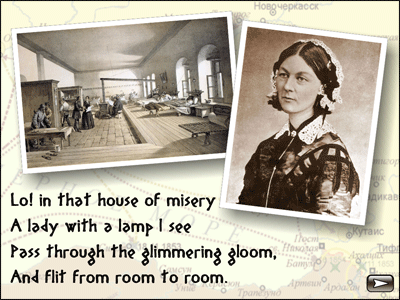
After discussing the differences between idols and heroes, students choose a real world hero and create media resources that celebrate and promote their actions.
Apps: Wixie

What is the difference between an idol and a hero?
Real-world heroes do not have to wear a cape, have spider-like senses or possess special powers. Outside of the comic universe, real heroes live among us and often receive no recognition for their heroic actions. The hero might be working towards peace and freedom, campaigning for a greener Earth, or helping others with everyday needs.
Choose a hero in your family or community, in chemistry or another vocation, or even a hero from history. Conduct research about this person and their actions or interview them firsthand. Then, create a poster, flyer, slide show, web site, or other media resource to educate others on this hero and how their actions are, or were, heroic.
Often times we use the words “hero” and “idol” interchangeably when referring to someone famous. What differentiates a hero from an idol? Who are your heroes? Be prepared with sample heroes and idols to help the conversation get started. Provide short essays, videos, or news articles of people from both categories. Engage students in a conversation of some of the most famous heroes of the past and present.
Question students on what identifies a person as a hero. What differentiates them from an idol? Work together to complete a Venn diagram comparing the traits of heroes and idols with the traits they share in the overlapping part of the diagram. Have the students analyze whether a person can be both an idol and a hero.
Read a story like Kamala Harris’s Heroes are Everywhere and continue discussing heroes.
Have students choose a hero they would like to celebrate. You might focus their choices in a specific area, like science, math, or history, or have them choose a hero in your community.

Start by having students, or teams of students who are collaborating, brainstorm what they already know about this person and their work. This will help them identify words and phrases they can use to locate more information if they are conducting research or develop more powerful questions if they are conducting interviews.
Give students time to research or interview this hero, causes they are or were passionate about and their actions. Possible information sources include the school library, online resources, newspapers, and videos. You can also conduct first-person interviews with the hero or even people who know them.
You can provide students with questions to help them research or conduct an interview but try to encourage them to craft their own questions based on prior knowledge. It may be helpful for students to conduct several shorter interviews so they can ask better questions as they learn more about their hero and their actions.
As students conduct their research, whether through text or video resources or even interviews, make sure they can answer the following questions:
Students should combine the facts and stories from their research and use a tool like Wixie to write a composition or narrative introducing the hero and why this person deserves a hero’s title. Work with them to determine how they might best share and show the story of their hero. Details and organized writing are essential in conveying how this person displays the qualities of a hero. Even if students are producing a poster to demonstrate understanding, a solid story about the person will help to guide their visual work.
Once a narrative has been composed, have students decide what type of product they will create to showcase their hero. Then, students should decide which pieces of the narrative they will use to direct their work. They should return to the research process to find media that supports their ideas. This might include first-person interview segments, photographs, images they will use as models for their own illustrations, and so on.
Regardless of the type of product students choose to create, the media should include:
Work should be saved, exported, or printed so that it can be shared.
You may choose to display student posters around school or see if a local coffee shop would display them for a month. Post student media resources to your school web site for wider distribution. If students chose a family member, teacher, or first-responder, or other community member, share it with them (and their peers!)
You could have a tech-savvy team of students create a kiosk interface to each of the projects and display the student work in a local museum or at City Hall (this would work great for a community heroes project, and you should be able to easily secure grant funding to cover the cost of the kiosk for this type of project).
If student heroes center on a subject or career, like biology, connect with a local university or even a local biotech company to be the audience for student work. Invite local experts to help with project evaluation.
Begin by evaluating student discussions as you work to differentiate idols and heroes. The power of their writing will be dramatically reduced if they can’t articulate the difference.
Evaluate the extent of student research about their hero. How well are they able to locate accurate and reliable information? Examine students initial writing and story to help you determine whether they understand what it means to be a hero and if they can evaluate the information they find in their research. The final media object will help you evaluate how well students are able to apply knowledge and information to communicate an idea and craft a written or visual argument.
Quinones, John. Heroes Among Us. ISBN: 0061733601
Harris, Kamala. Superheroes Are Everywhere. ISBN: 1984837494
The My Hero Project. My Hero: Extraordinary People on the Heroes Who Inspire them. ISBN: 0743283457
My Hero Project. myhero.com
Writing Standards
Text Types and Purposes
W.6.2. Write informative/explanatory texts to examine a topic and convey ideas, concepts, and information through the selection, organization, and analysis of relevant content.
W.6.4. Produce clear and coherent writing in which the development, organization, and style are appropriate to task, purpose, and audience.
W.6.8. Gather relevant information from multiple print and digital sources; assess the credibility of each source; and quote or paraphrase the data and conclusions of others while avoiding plagiarism and providing basic bibliographic information for sources.
W.6.9. Draw evidence from literary or informational texts to support analysis, reflection, and research.
6. Creative Communicator
Students communicate clearly and express themselves creatively for a variety of purposes using the platforms, tools, styles, formats and digital media appropriate to their goals. Students:
a. choose the appropriate platforms and tools for meeting the desired objectives of their creation or communication.
b. create original works or responsibly repurpose or remix digital resources into new creations.
c. communicate complex ideas clearly and effectively by creating or using a variety of digital objects such as visualizations, models or simulations.
d. publish or present content that customizes the message and medium for their intended audiences.

Follow us on Instagram for daily inspiration

Create a thought web, cluster, flowchart, or other graphic organizer for a lesson
8 first projects to get students using technology
Creative, digital book reviews
Fun and powerful ideas with animated characters

Wixie
Share your ideas, imagination, and understanding through writing, art, voice, and video.

Rubric Maker
Create custom rubrics for your classroom.

Pics4Learning
A curated, copyright-friendly image library that is safe and free for education.

Wriddle
Write, record, and illustrate a sentence.

Get creative classroom ideas delivered straight to your inbox once a month.
Topics